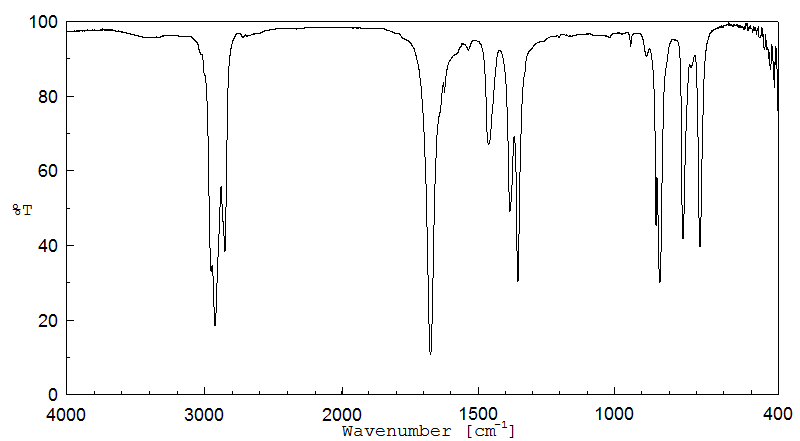| Name: | Trichloroacetic acid sodium salt 99% Material Safety Data Sheet |
| Synonym: | Sodium trichloroacetate; Sodium TC |
| CAS: | 650-51-1 |
Section 1 - Chemical Product MSDS Name:Trichloroacetic acid sodium salt 99% Material Safety Data Sheet
Synonym:Sodium trichloroacetate; Sodium TC
Section 2 - COMPOSITION, INFORMATION ON INGREDIENTS | CAS# | Chemical Name | content | EINECS# |
| 650-51-1 | Trichloroacetic acid, sodium salt | 99.0 | 211-479-2 |
Hazard Symbols: XI N
Risk Phrases: 37 50/53
Section 3 - HAZARDS IDENTIFICATION EMERGENCY OVERVIEW
Irritating to respiratory system. Very toxic to aquatic organisms, may cause long-term adverse effects in the aquatic environment.Hygroscopic (absorbs moisture from the air).
Potential Health Effects
Eye:
May cause eye irritation.
Skin:
May cause skin irritation.
Ingestion:
May cause gastrointestinal irritation with nausea, vomiting and diarrhea.
Inhalation:
May cause respiratory tract irritation.
Chronic:
Not available.
Section 4 - FIRST AID MEASURES Eyes: Flush eyes with plenty of water for at least 15 minutes, occasionally lifting the upper and lower eyelids. Get medical aid.
Skin:
Get medical aid. Flush skin with plenty of water for at least 15 minutes while removing contaminated clothing and shoes. Wash clothing before reuse.
Ingestion:
Never give anything by mouth to an unconscious person. Get medical aid. Wash mouth out with water.
Inhalation:
Remove from exposure and move to fresh air immediately. If not breathing, give artificial respiration. If breathing is difficult, give oxygen. Get medical aid.
Notes to Physician:
Antidote: None reported.
Section 5 - FIRE FIGHTING MEASURES General Information:
As in any fire, wear a self-contained breathing apparatus in pressure-demand, MSHA/NIOSH (approved or equivalent), and full protective gear. During a fire, irritating and highly toxic gases may be generated by thermal decomposition or combustion.
Extinguishing Media:
Use water spray, dry chemical, carbon dioxide, or chemical foam.
Section 6 - ACCIDENTAL RELEASE MEASURES General Information: Use proper personal protective equipment as indicated in Section 8.
Spills/Leaks:
Clean up spills immediately, observing precautions in the Protective Equipment section. Sweep up, then place into a suitable container for disposal. Avoid generating dusty conditions. Provide ventilation.
Section 7 - HANDLING and STORAGE Handling:
Wash thoroughly after handling. Use with adequate ventilation.
Minimize dust generation and accumulation. Avoid breathing dust, vapor, mist, or gas. Avoid contact with eyes, skin, and clothing.
Keep container tightly closed.
Storage:
Store in a tightly closed container. Store in a cool, dry, well-ventilated area away from incompatible substances.
Section 8 - EXPOSURE CONTROLS, PERSONAL PROTECTION Engineering Controls:
Use adequate ventilation to keep airborne concentrations low.
Exposure Limits CAS# 650-51-1: Personal Protective Equipment Eyes: Wear appropriate protective eyeglasses or chemical safety goggles as described by OSHA's eye and face protection regulations in 29 CFR 1910.133 or European Standard EN166.
Skin:
Wear appropriate protective gloves to prevent skin exposure.
Clothing:
Wear appropriate protective clothing to prevent skin exposure.
Respirators:
Follow the OSHA respirator regulations found in 29 CFR 1910.134 or European Standard EN 149. Use a NIOSH/MSHA or European Standard EN 149 approved respirator if exposure limits are exceeded or if irritation or other symptoms are experienced.
Section 9 - PHYSICAL AND CHEMICAL PROPERTIES Physical State: Solid
Color: Not available.
Odor: Not available.
pH: Not available.
Vapor Pressure: Not available.
Viscosity: Not available.
Boiling Point: Not available.
Freezing/Melting Point: >300 deg C dec
Autoignition Temperature: Not available.
Flash Point: 140 deg C ( 284.00 deg F)
Explosion Limits, lower: N/A
Explosion Limits, upper: N/A
Decomposition Temperature: 140 deg C
Solubility in water: soluble in ethanol, methanol, acetone, d
Specific Gravity/Density:
Molecular Formula: C2Cl3O2Na
Molecular Weight: 185.37
Section 10 - STABILITY AND REACTIVITY Chemical Stability:
Stable under normal temperatures and pressures.
Conditions to Avoid:
Dust generation, exposure to moist air or water.
Incompatibilities with Other Materials:
Strong oxidizing agents.
Hazardous Decomposition Products:
Hydrogen chloride, carbon monoxide, carbon dioxide, sodium oxide.
Hazardous Polymerization: Will not occur.
Section 11 - TOXICOLOGICAL INFORMATION RTECS#:
CAS# 650-51-1: AJ9100000 LD50/LC50:
CAS# 650-51-1: Inhalation, rat: LC50 = >365 gm/m3/4H; Oral, mouse: LD50 = 3600 mg/kg; Oral, rabbit: LD50 = 6 gm/kg; Oral, rat: LD50 = 3320 mg/kg; Skin, rat: LD50 = >2 gm/kg.
Carcinogenicity:
Trichloroacetic acid, sodium salt - Not listed by ACGIH, IARC, or NTP.
Other:
See actual entry in RTECS for complete information.
Section 12 - ECOLOGICAL INFORMATION Ecotoxicity:
LC50 (96 hr) common carp 2500 mg/l [Knapek, R. et al Einige Untersuchungen der toxischen Wirkung von Pestiziden im Wasser.
Tag.-Ber, Akad Landwirtsch. Wiss. DDR, Berlin 1974, 126, 105-109] LC50 (96 hr) minnow 2000 mg/l [Dennis, W.H. et al Environ. Sci.
Technol. 1979, 13(5), 594-598] Not toxic to bees [The Agrochemicals Handbook 3rd ed., 1991, RSC, London]
Section 13 - DISPOSAL CONSIDERATIONS Dispose of in a manner consistent with federal, state, and local regulations.
Section 14 - TRANSPORT INFORMATION IATA
Not regulated as a hazardous material.
IMO
Not regulated as a hazardous material.
RID/ADR
Not regulated as a hazardous material.
Section 15 - REGULATORY INFORMATION European/International Regulations
European Labeling in Accordance with EC Directives
Hazard Symbols: XI N
Risk Phrases:
R 37 Irritating to respiratory system.
R 50/53 Very toxic to aquatic organisms, may cause
long-term adverse effects in the aquatic environment.
Safety Phrases:
S 46 If swallowed, seek medical advice immediately
and show this container or label.
S 60 This material and its container must be
disposed of as hazardous waste.
S 61 Avoid release to the environment. Refer to
special instructions/safety data sheets.
WGK (Water Danger/Protection)
CAS# 650-51-1: No information available.
Canada
CAS# 650-51-1 is listed on Canada's NDSL List.
CAS# 650-51-1 is not listed on Canada's Ingredient Disclosure List.
US FEDERAL
TSCA
CAS# 650-51-1 is listed on the TSCA inventory.
SECTION 16 - ADDITIONAL INFORMATION N/A







